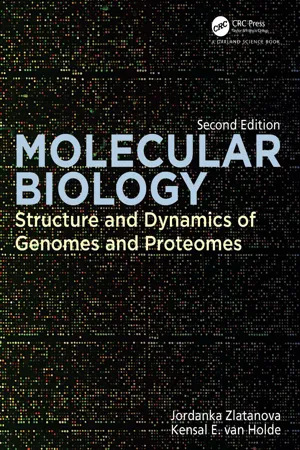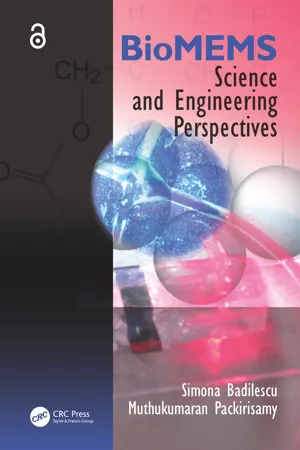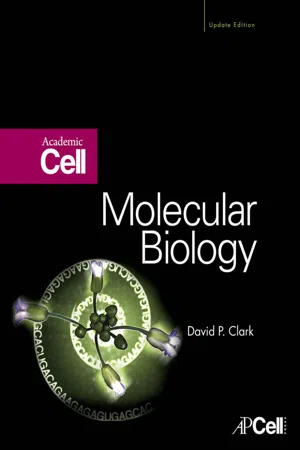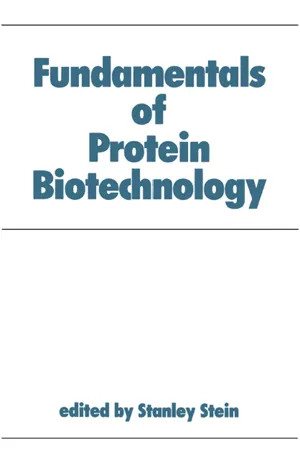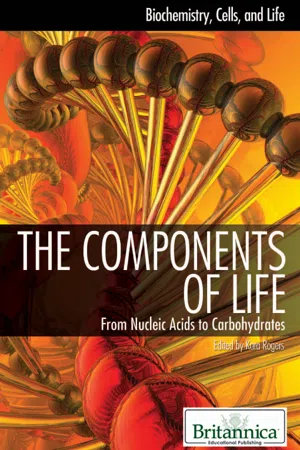Biological Sciences
Proteins
Proteins are large, complex molecules made up of amino acids that play crucial roles in the structure, function, and regulation of the body's tissues and organs. They are involved in various biological processes, including catalyzing chemical reactions, transporting molecules, and providing structural support. Proteins are essential for the growth, repair, and maintenance of cells and tissues in living organisms.
Written by Perlego with AI-assistance
Related key terms
8 Key excerpts on "Proteins"
- eBook - ePub
Pharmacognosy
Fundamentals, Applications and Strategies
- Rupika Delgoda, Simone Badal McCreath(Authors)
- 2016(Publication Date)
- Academic Press(Publisher)
24.6.3 Proteins as Drug Targets 49224.7 Conclusion 49324.8 Self-Assessment Questions 493References 493Learning Objectives• Explain the structure and biosynthesis of Proteins • Explain the general function of Proteins and how it relates to their structure • Discuss how man has utilized Proteins for his benefits, especially in the pharmaceutical industry.24.1 Introduction
Proteins are essential biological macromolecules, capable of performing vital functions in the body as enzymes, hormones, and regulatory, transport, and structural molecules involved in key immune, circulatory, and homeostatic processes. They are the most predominant macromolecules present in living cells, representing over 50% of the dry weight of a cell [1] and accounting for roughly 20% of the total body mass [2] . In 1838, Gerardus Mulder, a Dutch chemist, introduced the term “protein” to scientific literature in his publication “On the composition of some animal substances” (originally written in French), where he described the presence of a common complex substance in blood fibrin, serum, egg albumin, gelatin, and the gluten of wheat. The credit for the name however was granted to his colleague, Jons Jacob Berzelius (Swedish: jœns ˌjɑːkɔb bæɹˈseːliɵs), who made the suggestion to Mulder in a letter dated July 10, 1838, stating [3 ,4] - eBook - ePub
Molecular Biology
Structure and Dynamics of Genomes and Proteomes
- Jordanka Zlatanova(Author)
- 2023(Publication Date)
- Garland Science(Publisher)
All Proteins are large molecules: some are very large, with masses in the millions of Daltons. Some are fibrous and highly extended and thus have mainly structural roles. Similarly, scaffold Proteins connect and hold in place Proteins whose functions are interconnected. A vast class of more compact Proteins includes molecules that act as signals within and between cells, as transporters of small molecules, as regulators of cellular processes, and as enzymes. Enzymes are the catalysts responsible for facilitating the myriad chemical reactions that a living cell or organism utilizes in its metabolism and growth.Proteins are essential for the structure and functioning of all organisms
It has been estimated that a typical human cell contains about one billion protein molecules, of over 20,000 different kinds. Some are present as only a few molecules per cell, while others are present in the millions. The directions for producing this vast array of complicated molecules are encoded in every cell of an organism, in its DNA. The pathways through which DNA communicates this information to direct the formation of protein molecules, how it selects which Proteins are to be produced in each cell, and how that information is preserved from cell to cell and generation to generation is a major focus of molecular biology, the topic of this book. Proteins are one, but not the only, end product of information stored in DNA, but they are vital to the cell. Thus, it is important that we begin by finding out how Proteins are structured, and how they use that structure.3.2 Protein structure
For a long time the question lingered: were Proteins even defined molecules at all? The question stemmed from the dominance of the idea of colloidal aggregates of small molecules. The possibility that Proteins were such colloids was put forward as an explanation for some peculiar behavior of protein solutions observed in many laboratories. The very low osmotic pressure produced by putting a protein in solution seemed to point to absurdly high molecular weights for many protein molecules. It was easier for chemists of the age to propose that these were not “true” solutions of molecules, but some special colloidal state of matter. Colloidal aggregates do exist (as in soaps and detergents, for example), but was this the nature of Proteins? The wholly erroneous colloidal model persisted for a long time, and the molecular structure of one of the basic components of life remained contentious. - eBook - ePub
BioMEMS
Science and Engineering Perspectives
- Simona Badilescu, Muthukumaran Packirisamy(Authors)
- 2016(Publication Date)
- CRC Press(Publisher)
3 Biomolecules and Complex Biological EntitiesStructure and Properties
BioMEMS devices deal with biomolecular species from the molecular level to the cellular level, as seen in Chapter 1 . The interaction between the devices and biospecies differs so much, depending upon their size and nature. Hence, it is important to understand the structure and nature of different biospecies that would interact with microsystems.3.1 AMINO ACIDSAmino acids play central roles both as building blocks of Proteins and as intermediates in metabolism. Proteins are created by polymerization of amino acids, a process in which amino acids are joined to form chains called peptides or polypeptides. The primary structure of a protein refers to the nature of the sequence of amino acids that makes up the protein. The biological activity of Proteins is determined by the properties of amino acids that constitute protein composition. The formation of Proteins from amino acid building blocks is shown in Figure 3.1 .Proteins are important, not only because they catalyze all of the reactions in living cells, but also due to their role in controlling virtually all the cellular processes. Proteins act as catalysts, regulate transport across cell membranes, and control expression of genes and replication of genetic material. In addition, Proteins contain the information regarding the folding of protein into a three-dimensional structure, as well as the stability of this structure within their amino acid sequences. The protein’s specific function in the body is determined by its three-dimensional shape, which results from the sequence of amino acids. In addition to their function in the formation of Proteins, amino acids have many other biologically important roles. For example, amino acids such as glycine and glutamate, which are found in most Proteins, also function as neurotransmitters that inhibit and amplify, respectively, the transmission of nerve impulses in cells. A nonstandard amino acid called carnitine transports fatty acids into muscle cells for energy production. Many amino acids are used to synthesize molecules other than Proteins. For example, tryptophan, an essential amino acid found in Proteins such as casein and fibrin, is a precursor of serotonin, which is a neurotransmitter important for the regulation of mood. On the other hand, glycine takes part in the biosynthesis of porphyrins such as heme, - eBook - ePub
- David P. Clark(Author)
- 2009(Publication Date)
- Academic Cell(Publisher)
Chapter SEVEN
Protein Structure and function
Proteins Are Formed from Amino Acidsr Formation of Polypeptide Chains Twenty Amino Acids Form Biological Polypeptides Amino Acids Show Asymmetry around the Alpha-carbon The Structure of Proteins Reflects Four Levels of Organization The Secondary Structure of Proteins Relies on Hydrogen Bonds The Tertiary Structure of Proteins A Variety of Forces Maintain the 3-D Structure of Proteins Cysteine Forms Disulfide Bonds Multiple Folding Domains in Larger Proteins Quaternary Structure of Proteins Higher Level Assemblies and Self-Assembly Cofactors and Metal Ions Are Often Associated with Proteins NucleoProteins, LipoProteins and GlycoProteins Are Conjugated Proteins Proteins Serve Numerous Cellular Functions Protein Machines Enzymes Catalyze Metabolic Reactions Enzymes Have Varying Specificities Lock and Key and Induced Fit Models Describe Substrate Binding Enzymes Are Named and Classified According to the Substrate Enzymes Act by Lowering the Energy of Activation The Rate of Enzyme Reactions Substrate Analogs and Enzyme Inhibitors Act at the Active Site Enzymes May Be Directly Regulated Allosteric Enzymes Are Affected by Signal Molecules Enzymes May Be Controlled by Chemical Modification Binding of Proteins to DNA Occurs in Several Different Ways Denaturation of ProteinsProteins Are Formed from Amino Acids
The nucleic acids DNA and RNA are largely concerned with storing and distributing genetic information, and so are termed informational macromolecules. In contrast, Proteins are biological polymers that carry out most of the cell’s routine functions. Some Proteins are structural or take part in maintaining cell shape and in carrying out cell movements; others transport nutrients and wastes; others function enzymatically - eBook - ePub
- Stein(Author)
- 2017(Publication Date)
- CRC Press(Publisher)
In some Proteins there can be further association of these units into dimers, tetramers, etc., and other hierachical arrangements which are referred to as the quaternary structure. The biological activity of a protein is totally dependent on the integrity of its three-dimensional structure. The folding of the polypeptide chain or the association of folded subunits defines a surface region which serves as the binding or active site through which Proteins as well as other biosolutes interact via electrostatic forces, hydrogen bonds, hydrophobic Lipshitz and van der Waals forces, or covalent bonds to effect their biological actions. Proteins as biological effectors, as distinct from structural Proteins, such as collagen and keratin, can be divided into six major groups. These are: 1. Enzymes: Protein catalysts which mediate and accelerate the rate of biological reactions. 2. Regulatory Proteins: Hormones, lymphokines and growth factors which interact with membrane receptors to regulate cellular function. 3. Receptors: Proteins on the cell membrane which interact with regulatory Proteins and initiate the intracellular biochemical events which account for the biological response. 4. Immune Proteins: Proteins synthesized by cells of the immune system to bind to foreign substances or organisms and initiate a series of biochemical and cellular events leading to their destruction and removal. 5. Carrier Proteins: Ligand binding Proteins which function intracellularly and extracellularly to create reservoirs of biologically important substances. 6. Contractile Proteins: Highly specialized Proteins which transfer biochemical energy to cellular movement. In biological systems Proteins from these groups are arranged into intricate intercommunicating networks through which the organism identifies and responds to changes in its internal and external environment. In this chapter we examine in detail some of these protein effector systems - eBook - ePub
- Rene Fester Kratz(Author)
- 2017(Publication Date)
- For Dummies(Publisher)
Chapter 4 for more on enzymes). Still others are involved in muscle contraction or immune responses. Proteins are so diverse that I can’t possibly tell you about all of them. What I can tell you about, however, are the basics of their structure and their most important functions.The building blocks of Proteins
Amino acids, of which there are 20, are the foundation of all Proteins. Think of them as train cars that make up an entire train called a protein. Figure 3-4 shows what one amino acid looks like.© John Wiley & Sons, Inc.FIGURE 3-4: Amino acid structure.The genetic information in cells calls for amino acids to link together in a certain order, forming chains called polypeptide chains. Amino acids link together by dehydration synthesis, just like sugars do (as explained in the earlier “Making and breaking sugars ” section), and each polypeptide chain is made up of a unique number and order of amino acids.The main functions of Proteins
One or more polypeptide chains come together to form functional Proteins. Once formed, each protein does a specific job or makes up a specific tissue in the body.- Enzymes are Proteins that speed up the rate of chemical reactions. Metabolic processes don’t happen automatically; they require enzymes. For the full scoop on enzymes, head to Chapter 4 .
- Structural Proteins reinforce cells and tissues. Collagen, a structural protein found in connective tissue (the tissue that joins muscles to bones to allow movement), is the most abundant protein in animals with a backbone. Connective tissue includes ligaments, tendons, cartilage, bone tissue, and even the cornea of the eye. It provides support in the body, and it has a great capability to be flexible and resistant to stretching.
- Transport Proteins move materials around cells and around the body. Hemoglobin is a transport protein found in red blood cells that carries oxygen around the body. A hemoglobin molecule is shaped kind of like a three-dimensional four-leaf clover without a stem. Each leaf of the clover is a separate polypeptide chain. In the center of the clover, but touching each polypeptide chain, is a heme group with an atom of iron at its center. When gas exchange occurs between the lungs and a blood cell (for more on respiration and circulation, see Chapter 15
- eBook - ePub
The Components of Life
From Nucleic Acids to Carbohydrates
- Britannica Educational Publishing, Kara Rogers(Authors)
- 2010(Publication Date)
- Britannica Educational Publishing(Publisher)
CHAPTER 4Types and Functions of ProteinsT he identification of common physicochemical features among the many different types of Proteins has enabled scientists to develop general systems for their classification. Historically, large groups of Proteins were distinguished from one another on the basis of solubility in different chemical solvents. Today, scientists often distinguish between the many different types of Proteins based on their biological activities. This approach is particularly valuable for recognizing and understanding the biological significance of Proteins. However, it is complicated by the fact that some Proteins are multifunctional and that the cellular functions of certain other Proteins are unknown. As a result, many scientists also consider structural characteristics in protein classification, though this approach is made difficult due to the absence of structure information for many substances. Thus, the ongoing discovery and characterization of the different structures and functions of Proteins is fundamental in forming a coherent system of protein classification.CLASSIFICATION OF Proteins
After German chemists Emil Fischer and Franz Hofmeister independently stated in 1902 that Proteins are essentially polypeptides consisting of many amino acids, an attempt was made to classify Proteins according to their chemical and physical properties, because the biological function of Proteins had not yet been established. (The protein character of enzymes was not proved until the 1920s.) Proteins were classified primarily according to their solubility in a number of solvents. This classification is no longer satisfactory, however, because Proteins of quite different structure and function sometimes have similar solubilities. Conversely, Proteins of the same function and similar structure sometimes have different solubilities. The terms associated with the old classification, however, are still widely used. They are defined below. - Daniel Graham(Author)
- 2019(Publication Date)
- CRC Press(Publisher)
One Protein Structure Fundamentals and ComplexityThe components, assembly, and sources of Proteins are discussed. The levels of structure are illustrated via archetypal globular systems such as lysozyme. Particular attention is given to the complexity so presented—chemical, structural, and biological. This underscores the challenges of protein structure analysis at all levels.A WHAT ARE Proteins?
Proteins are polymers, but not just any polymers. Groundbreaking advances were made in the polymer chemistry fields beginning in the 1930s and 1940s [1 ,2 ]. The applications were materials: nylon, polystyrene, polyvinyl chloride, etc. For these systems, one or two single-molecule units are linked covalently and extensively. The product is a chain-like compound composed of many small molecules. Nylon is a case in point. The so-called Nylon-66 derives from the high-temperature condensation of adipic acid and hexamethyldiamine:The material is structurally complicated owing to the cross-links involving hydrogen bonds. It is famous for durability and applications in the fabric and other materials industries.HO 2C(4CH 2)CO 2H +NH 2(6CH 2)NH 2→280 ° C+[n–CO]CO–NH(4CH 2)–NH–(6CH 2)H 2OAnd so it goes. The polymer sciences are rich with procedures for linking small molecules to form macroscopic ones. Anhydrides, glycols, phthalates, etc., all prove to be suitable building blocks. Note a critical feature. While the physical structure of a polymer is complicated, the abstract representation is simple. One has only to portray the fundamental unit surrounded by brackets and include a subscript integer n :This can represented pictorially using organic structure graphs.——[ monomeric unit ]nWhether textual or graphical, the fundamental unit carries information about all
Learn about this page
Index pages curate the most relevant extracts from our library of academic textbooks. They’ve been created using an in-house natural language model (NLM), each adding context and meaning to key research topics.

